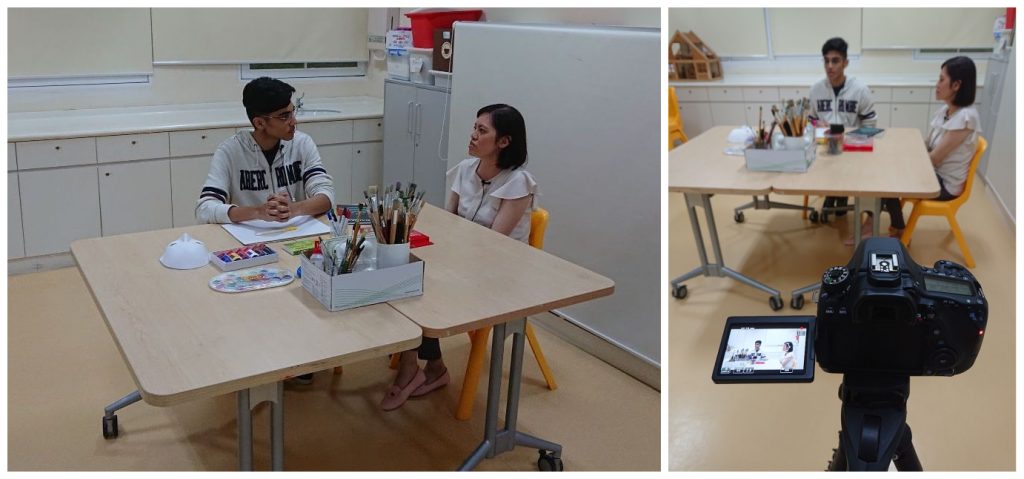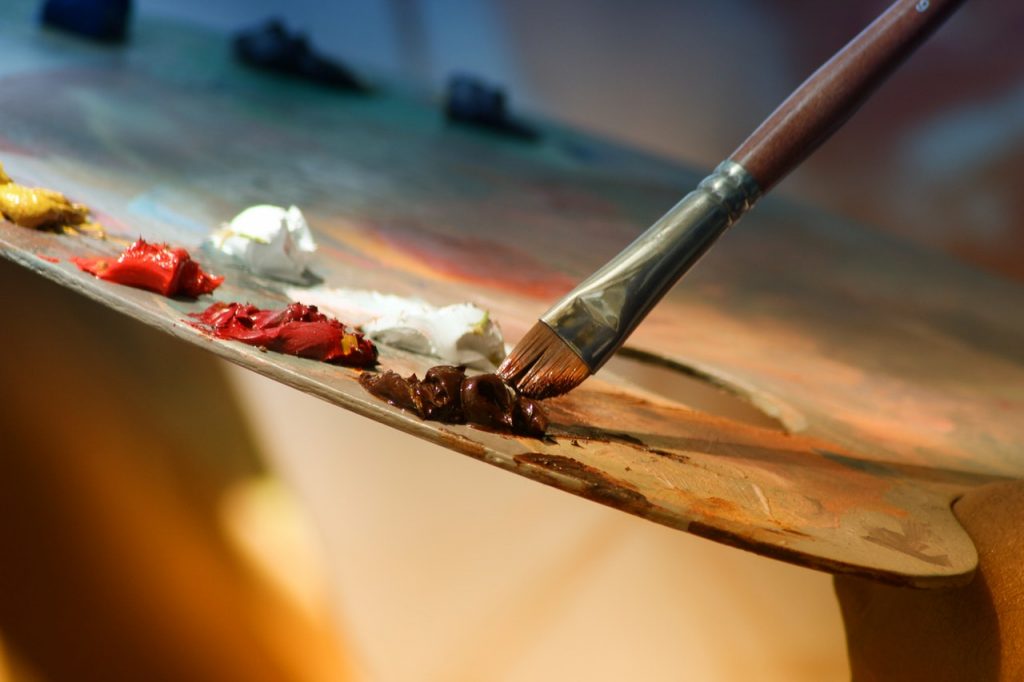
Meet Ang Kay Sing, Senior Occupational Therapist and Art Therapist at the Institute of Mental Health. The 34-year-old runs inpatient art therapy groups with children and adolescents, as well as for individual outpatients. Over a session involving some sketching pencils and paints, ISHAN SINGH chatted with Kay Sing about how art can be used to express thoughts and feelings when words fail us.
Tell us about your journey towards becoming an art therapist. To start off, what was your educational background and what kind of formal training did you receive?
After I earned a diploma in Occupational Therapy from Nanyang Polytechnic, I completed a one-year degree conversion at the University of Sydney. Ater several years of working, I embarked on two years of postgraduate training at the University of Hertfordshire in the UK before I obtained a Master’s degree in Art Therapy.
What got you interested in this field?
Through my course of work as an Occupational Therapist, I was exposed to different therapy modalities, including art-making. I had the privilege of being mentored by some highly experienced therapists who practised from a psychodynamic framework. This stirred my interest in the psychodynamic framework, which looks into the conscious and subconscious mind of individuals. Subsequently, I was given the opportunity to co-conduct an art group with an art therapist—noticing my interest, she encouraged me to further my skills and knowledge by obtaining formal training. In order to practise as an art therapist, I had to get a Master’s degree in Art Therapy, which I did, under a scholarship from the Ministry of Health.
Not many people know what art therapy is about or who it’s catered for. Can you give us a quick description?
Art therapy involves making art in the presence of an art therapist. Patients are free to choose from a variety of drawing equipment and told to create whatever they feel like creating. Emotions or thoughts that are difficult to articulate using words can be communicated through the artwork—often subconsciously. The art therapist therefore works with individuals to understand the issues and feelings that are underlying their current difficulties.

Ishan chatting with Kay Sing over an art therapy session
What does an ordinary day in your life as an art therapist look like?
My typical workday involves aspects of Occupational Therapy work and Art Therapy, since my role in IMH covers both. In my Art Therapist capacity, I run inpatient art therapy groups in the child and adolescent ward twice a week, and have outpatient (individual) clinic sessions, also twice a week. Additionally, I may see individual patients if referred by the ward doctor. During weekly team meetings, I’ll update my colleagues about my observations and discuss the cases I’m working on.
From your observations, what sorts of mental health problems do adolescents usually face?
In my experience, most of the young people I’ve worked with struggle with major depression and anxiety disorders. However, I cannot speak for all adolescents in general since my cases only represent a small proportion of youth.
How important is it to have a supportive network (family and friends) for someone struggling with mental health issues?
The family is a young person’s primary source of support, so it plays an extremely important role in their emotional development. Adolescence is also the life stage during which peer influence is very strong, thus peers can definitely have an influence over their mental health.
Were there any cases that have left a lasting impression on you?
I once saw a boy with Autism Spectrum Disorder (moderate severity), and who had limited verbal responses for about half a year. When I returned to work after a two-week vacation, his grandmother told me that he kept asking her when he would be coming to see me. I was surprised, because I had made efforts to prepare him for my absence. However, through this incident, I felt a certain warmth from him. It was also a reminder of how important the therapeutic relationship is. Even though young people with ASD may seem difficult to connect with emotionally, they are capable of forming meaningful relationships with others.

Photo by Daian Gan, via Pexels
What do you think sets art therapy apart from other forms of mental therapy?
Art therapy, as with other expressive therapies like music therapy, is unique in the sense that it taps on the non-verbal abilities of individuals. It does not require speech and it accesses the more primitive parts of the brain. Thoughts and feelings, which might be difficult to put into words, can be expressed through an art form, which can then be examined along with the art therapist. Over time, meanings can be derived from the artwork.
What are some misconceptions people have about art therapy?
The most common misconception is that art therapists are able to interpret artworks simply by looking at the art. This is not true—there is much ambiguity in art (which is also the beauty of it), and one cannot draw definitive conclusions from isolated artworks without considering who the artist is. Getting to know someone takes time—it’s only after many sessions with the individual/artist that we may have a more refined understanding of their artworks.
Another common misconception is that art therapy is only suitable for individuals who are good at art. But there is no right or wrong way to make art in art therapy. As long as the individual is willing to use art materials and has interest in any art medium, they will be suitable for art therapy.
Do you have any advice for someone going through challenges with their mental health?
Early intervention is crucial for recovery. If you’re struggling, reach out for help at the earliest time.
Banner image by Steve Johnson, via Pexels
 |
Ishan Singh is a first-year undergraduate at the Singapore Management University’s Lee Kong Chian School of Business, and an Editorial Assistant of Social Space Magazine. He spends any spare time he has rapping or producing music, and hopes to pursue a career in music. Passionate about the arts and writing, Ishan hopes to write articles and make videos that shed light on the importance of the arts in our communities. He can be reached at ishan.singh.2018@business.smu.edu.sg |








Comments